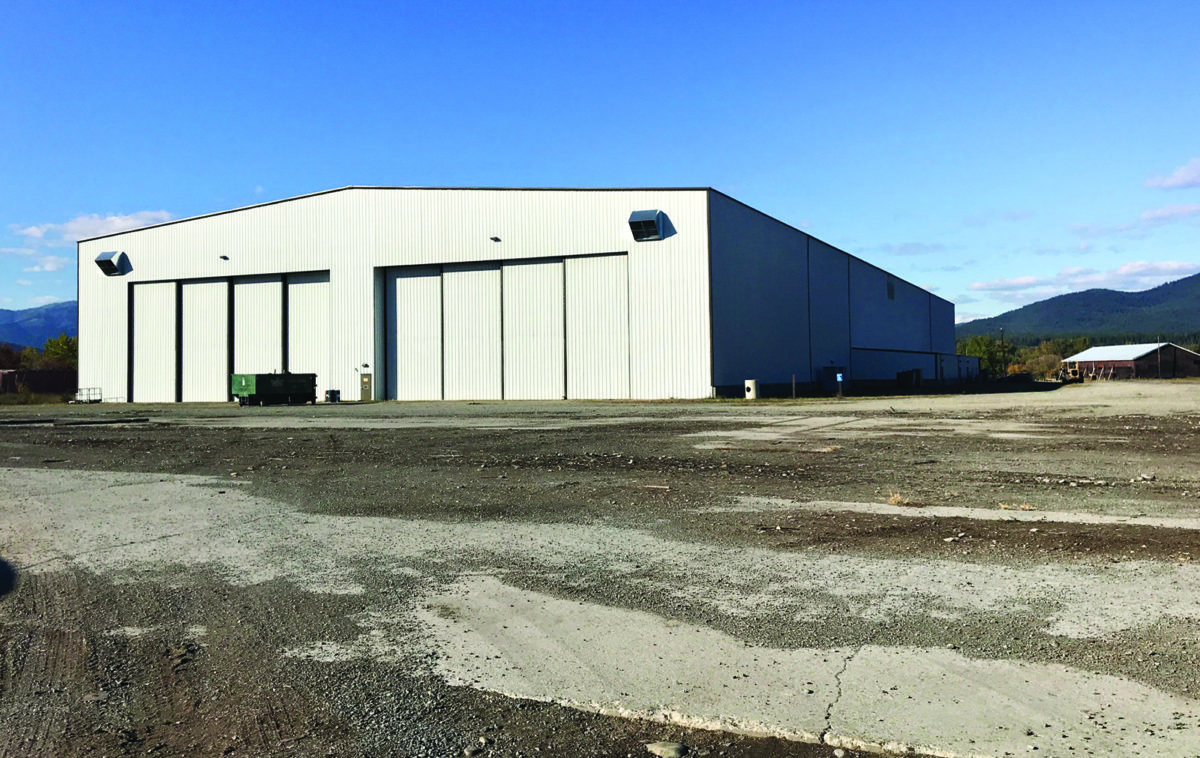EPA Proposes Delisting Portion of Libby Superfund Site that Includes Industrial Park
Removal of the 400-acre Kootenai Business Park from the National Priorities List would signal a milestone in the federal cleanup of Libby, where widespread asbestos contamination from a now-shuttered vermiculite mine has stifled economic development
By Tristan Scott
Officials with the U.S. Environmental Protection Agency (EPA) say a 400-acre industrial park in Libby is clean enough to partially delete from the National Priorities List, potentially opening the door for more economic development in Lincoln County, where widespread asbestos contamination has hobbled the northwest Montana community for decades.
According to federal officials in charge of the Superfund remediation, the area known as Operable Unit (OU) 5 includes the former Stimson Lumber property, which is now home to the Lincoln County Port Authority’s Kootenai Business Park and multiple businesses, including a new manufacturing plant that is expected to bring 200 jobs to the region.
Federal regulators said deleting the industrial park from EPA’s National Priorities List (NPL) signals a long-awaited milestone in the sprawling effort to undo more than six decades of contamination, during which the vermiculite mine daily spewed tons of asbestos-laden dust over the idyllic town cradled by the Cabinet Mountains, prompting one of the largest Superfund cleanups in American history.
“It is a great milestone for the community because it signifies that EPA is comfortable taking Operable Unit 5 off the National Priorities List of Superfund sites,” Dania Zinner, remedial project manager for the EPA, said Friday. “It’s also a milestone for us because it says we feel this site has been cleaned up, that no further actions are needed and that the program is working well and is protective of human health and the environment.”
The public can comment on the proposed deletion of OU5 online here or by emailing Zinner at [email protected]. Visit the Libby Superfund site webpage for more information.
Comments will be accepted through March 18.
Hundreds of people have been killed and thousands sickened following decades of exposure to asbestos from the now-shuttered W.R. Grace and Co. vermiculite mine, once the lifeblood of Libby, where workers filled lucrative jobs mining asbestos-laced ore, then carried the dust home on their clothes, exposing themselves and their families to the fibers.
The Libby Asbestos Superfund site was placed on EPA’s NPL in 2002 due to high levels of Libby amphibole asbestos in and around the communities of Libby and Troy. The site is divided into eight Operable Units, and the proposal to delete OU5 from the list leaves just one remaining unit: OU3, a 10,000-acre swath of forest in Lincoln County once home to the W.R. Grace and Co.’s vermiculite mine, ground zero for the Libby asbestos contamination.
“OU3 is still in progress,” Zinner said, noting that about half of the unit is on land managed by the U.S. Forest Service while the other half is owned by the Kootenai Development Corporation, which is a subsidiary of W.R. Grace. “It’s in the feasibility study phase of the project, so we still need to finalize the cleanup plan.”
Once the EPA, Montana Department of Environmental Quality (DEQ) and the Forest Service review the feasibility study, the proposed cleanup plan will be completed by 2025 or 2026, at which point the federal agency will begin seeking public feedback. Although EPA officials have billed the community as the cleanest it has been in years (in 2014, officials reported that air asbestos concentrations were 100,000 times lower than when the mine was running), the mine site and the contaminated forest around it remain relatively unchanged.
Long-term remediation of the other units has included the removal and containment of asbestos-laced contaminants and institutional controls to prevent additional exposures. EPA completed those cleanup actions on OU5 in 2016, Zinner said.

One year ago, the Columbia Falls-based Nomad Global Communication Solutions (GCS) announced plans to expand its operations manufacturing mobile command center vehicles by opening a new facility at the Kootenai Business Park, while bringing up to 200 jobs to Lincoln County. The expansion announcement followed Nomad’s purchase of the former Stinger Welding building in the industrial park, a 100,000-square-foot facility shuttered in 2013.
According to a recent blog post on the Nomad GCS website, the Lincoln County facility is geared toward manufacturing the company’s “military-spec containerized solutions.”
“Through the acquisition of a well-known (but long-vacant) Libby property, Nomad is positioning to meet skyrocketing Connected Mobile Operations Centers (CMOC) demand into the future,” the post states.
“Lincoln County is a natural fit for us,” CEO Will Schmautz said in the post. “The workforce in this area is highly skilled and driven. The community has been incredibly welcoming, and we believe our investment in infrastructure and local employees will be a win for everyone.”
Correction: An earlier version of this story misstated the acreage of Operable Unit (OU) 3 and has been updated to reflect the correct acreage of 10,000 acres set in 2016. The Beacon regrets the error.